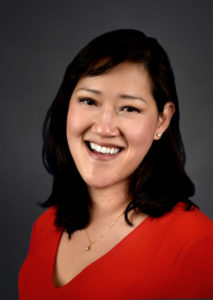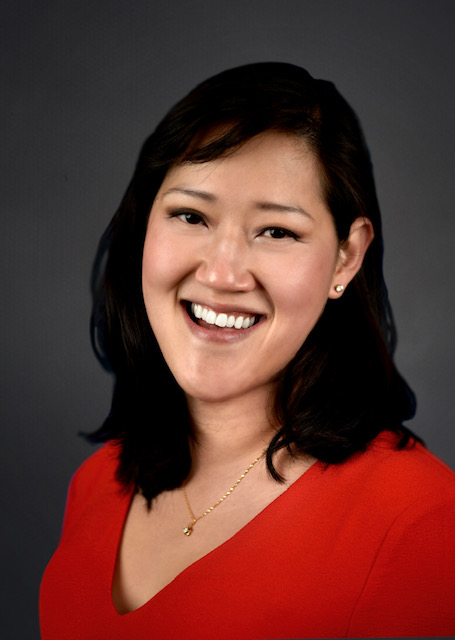 Tom: What important role do pharmacists play in Medi-Cal (California Medicaid) Managed Care?
Tom: What important role do pharmacists play in Medi-Cal (California Medicaid) Managed Care?
Johanna: In the managed care arena, there are experts in economics, actuarial statistics, medical treatments, and more, but pharmacists are the team members that can weave together the knowledge from each specialized expert and use it to recommend the best and lowest cost treatment pathways for members. Pharmacists are the crux of it all because we are the go-to team member that can combine clinical decision-making with operational and financial decision making.
Tom: How do you evaluate the best treatments available?
Johanna: It’s training and expertise. We review the latest clinical trials for new drugs, phase four reviews, and post-market studies on a regular cycle. But, it’s complicated. Unfortunately, there is no standardized clinical trial protocol. Every company designs their clinical trials in a different way and each study has different patient parameters, like age of participants, number of comorbidities, etc. We don’t have the luxury of apples to apples comparisons, it’s more like apples to oranges or bananas to mangoes.
It’s a bit like real estate. If you’ve ever bought a house, then you know that lenders require an appraisal to make sure the house is valued appropriately. The appraiser finds nearby properties that are like your house, but not exactly the same. One has a pool, another has more fireplaces, a third has less square footage, etc. The appraiser adds or subtracts value based on the specifics to assign the right “comp.”
We perform a similar analysis. We take all these different drug efficacy studies and create a system to determine the merits or demerits of each study for a given drug or class of drugs so we can make an informed comparison. If we find good evidence for a change, then we make a recommendation. That said, the findings must show meaningful improvement. I read one study that showed a 2% improvement on labs. Two percent is not a significant improvement to a patient’s health or quality of life.
Tom: Do you work with any technology tools that help you with cost containment?
Johanna: There are no tech tools currently in use. We create a formulary and put up guardrails within it to control costs. These include prior authorization and step therapy guides. In Managed Medi-Cal, we have pretty good formulary compliance for most general health issues. That said, some disease classes are more open and flexible. Often there is an assumption that physicians in Oncology, HIV, and other specializations know what is best for their patients’ therapy, so some plans don’t have a lot of guardrails in those domains.
Tom: Once the formulary is developed, how do Physicians know what medications are in the formulary?
Johanna: That’s a good question. Typically, prescribers don’t know what medications are on their patient’s plan formulary. For us in Medi-Cal Managed Care, it’s a little different because there are prescribers who work almost exclusively with our membership. They get to know our formulary, what’s on and what’s off through their experiences. This can include trial and error as they go through some back and forth with the pharmacist at the point of sale. When they prescribe a medication that is not on the formulary, they get recommendations on what to try next if there is a required prior authorization. Once they learn what medications are covered, they tend to prescribe that medication for their other patients.
The industry has struggled to do better EMR integration, which gives the provider feedback at the point of prescription instead of the point of sale. EMR is a great idea because it saves time for the prescriber, the pharmacist, and the patient. Nationally, this has not proven successful though.
Tom: There is a lot of hope for this technology in the future but, the adoption has been pretty sparse to date. It’s a challenge to get the data to make EMR work well.
Johanna: Absolutely. Our experience has been that asking prescribers to check multiple sources is a non-starter. They are already strapped for time so even if I put the formulary on a website, Epocrates, or other place, it is not useful because they are not prepared to spend more time researching each patient’s accepted drug lists. Even though, in theory, the drug information is available, in practice, prescribing is still basically guess work.
Tom: There is so much data available, and with the right technology, it could take the guess work out of the equation, right?
Johanna: It would be helpful to have technology that allowed seamless information sharing from the point of prescribing to what’s covered when they go to the pharmacy. There are huge technological challenges with that level of information sharing. One particular challenge is the lack of integration between medical and pharmacy data. Most organizations use different platforms with different buckets of data and so when the pharmacist is working to evaluate a prior authorization, they may have to check three or more different systems to get the right recommendation. Health plans have the information but it’s all in different places.
Another challenge is the overlap and lack of transparency between pharmacy and medical claims data. There is potential waste in medical and pharmacy spend that is discoverable only after the fact. It is very hard to prevent. This is because benefits can be processed through pharmacy claims and / or medical claims. For example, an at-home blood pressure machine can be covered through both avenues and the patient ends up with two machines. This double coverage is a problem because of the obscurity of medical claims data.
In the pharmacy world, insurance claims happen at the point of sale and the claims forms are standardized. It’s easy and straightforward. On the medical claims side, providers have 60-90 days or even up to a year to submit claims and then there may be more back and forth about what is covered. Also, there is no standardization of medical claims data. It’s really messy.
Tom: Where do you see managed care pharmacy going in the future?
Johanna: I am kind of biased because I work in quality and value-based care, so I’d like to see pharmacists working on more quality programs. It makes intuitive sense because many quality metrics relate to pharmacy, like the HEDIS measure around asthma medication ratios, controlling blood pressure, A1C control for diabetics, and other areas. Pharmacists could have a lot of impact in those disease states because they are drug driven therapies or maintenance.
California is doing a lot of work thinking about the value of managed care pharmacists now that they are moving to a Fee for Service program with Magellan. Plans are still responsible for care coordination and quality. Some organizations have sent pharmacists to large clinic sites based on the model of health plans that used to place nurses or case managers in large hospitals. Having pharmacists housed with large medical centers allows providers to ask plan-related questions in-house and limit the back and forth at the pharmacy. This would be of great value to patients as there would be less chance of delay in filling their prescriptions due to prescribers not knowing what medications are covered under their patient’s plan.
About Johanna
Johanna Liu is the Director of Quality and Process Improvement at Santa Clara Family Health Plan in San Jose, CA. She specializes in managed care, quality, and health care strategy for health systems and health plans with experience in Medicare and Medi-Cal. Dr. Liu earned her MBA from Haas School of Business, University of California, Berkeley, and is a Pharm.D. graduate of the University of the Pacific. She is a Fellow of the California Health Care Foundation Leadership Program. Her interest in advocacy has led her to serve on the CA Department of Health Care Services (DHCS) Global Medi-Cal Drug Use Review Board, CA DHCS CalAIM NCQA Workgroup, Board of Trustees for California Pharmacists Association, and Academy of Managed Care Pharmacy Public Policy Committee.



